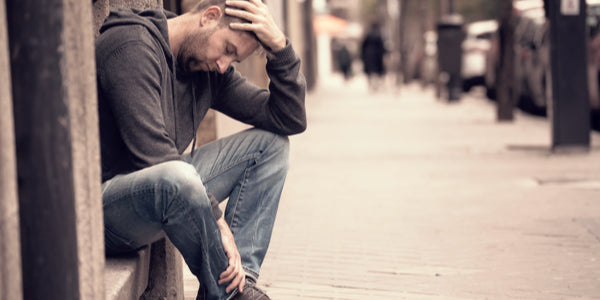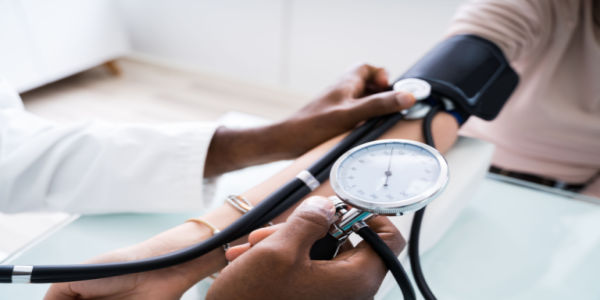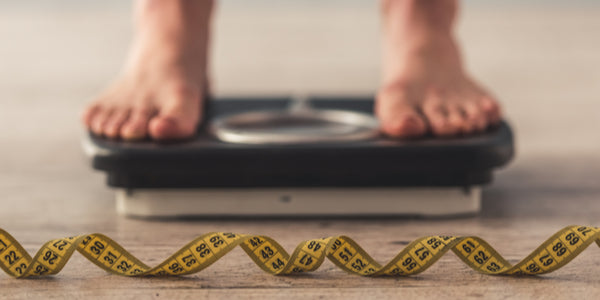
Feeling sad, irritable, and angry is normal. But when these feelings are persistent and start impeding on everyday life, a diagnosis of depression may be at hand.
According to the National Institutes of Mental Health, depression, also called "clinical depression" or a "depressive disorder," is a mood disorder. It causes distressing symptoms that negatively affect how one feels, thinks and handles daily activities such as sleeping and eating.
Depression can impact anyone and is not confined to one gender. What's more, male depression often goes undiagnosed and can lead to devastating outcomes, suicide included.
Being able to identify symptoms of depression in men can help lower these risks and improve overall quality of life.
Men's Depression By the Numbers
The American Psychology Association (APA) reports the following numbers of depression in men.
• Nine percent of U.S. men have daily feelings of depression or anxiety
• One in 3 of those men take medication related to those negative feelings. One in 4 men spoke to a mental health professional
• Almost 31 percent of men have suffered from a period of depression in their lifetime.
• White men age 85 and older have the highest suicide rate of any demographic group in the United States. This is also four times larger than the population as a whole. Fifty-one out of every 100,000 white males older than 85 commit suicide each year.
• The suicide rate among American men is about four times higher than among women.
The American Foundation for Suicide Prevention reports suicide is the leading cause of death in the U.S. And in 2017, men died by suicide over 3.5 times more often than women. And males accounted for almost 70 percent of suicide deaths.
That being said, knowing the risks and symptoms of depression in men could be lifesaving.
Men’s Depression Symptoms & Risk Factors
Several factors can play a role in depression in both men and women. These often include:
• Biochemistry, or changes in brain chemicals
• Genetics and a family history of depression
• Certain personality characteristics, including low self-esteem
• Environmental factors such as ongoing exposure to stress, violence, and abuse
People can experience different signs of depression. However, if experiencing several of the following symptoms for at least two weeks, one may be suffering from depression:
• Persistent sadness, anxiousness, or "empty" mood
• Loss of interest or pleasure in hobbies and activities
• Feelings of guilt, pessimism, hopelessness, helplessness, and worthlessness
• Decreased energy, fatigue, and being "slowed down"
• Difficulty concentrating, remembering, and making decisions
• Difficulty sleeping, including early-morning awakening and oversleeping
• Appetite and/or unintentional changes in weight
• Thoughts of death or suicide and suicide attempts
• Restlessness and irritability
• Aches or pains, headaches, cramps, or digestive problems without a clear physical cause
Males and females of all ages can experience these symptoms of depression. However, symptoms often present differently. Men may appear more angry and aggressive rather than sad and often display reckless behavior. This can make depression seem unlikely and may go blanketed.
Ways to Treat Male Depression
First and foremost, seek help right away if having suicidal thoughts. The National Suicide Prevention Lifeline is one resource to use immediately, as it offers 24/7, free and confidential support.
If experiencing major depressive disorder, there are recommended steps to take. Start by seeking out medical advice from a primary care provider or other healthcare professional. A doctor can also help rule out medical conditions and medication side effects that may mimic symptoms of depression.
Following diagnosis, there are a number of methods used to treat depression. These often include medications, psychotherapy, and self-help strategies.
Medications
Medications, or antidepressants, are often the first line of treatment for depression. They may be used in conjunction with psychotherapy, described below, as well.
There are a number of known antidepressants proven to be effective. However, these sort of medications come with a host of risks and side effects. And what might work for one person may not work for the next.
That being said, taking antidepressants is often a trial and error to find the right one or even a combination. It may take time to find the most effective dosage as well. It can take upwards of a month for medication effects to kick in.
There are other medicines that may be used in addition to antidepressants, too. These particularly serves true in treatment-resistant depression. Examples of add-on drugs include antipsychotic, stimulant, and anti-anxiety medications.
Psychotherapy
Psychotherapy, also known as talk therapy, is useful for teaching how to develop healthier coping techniques. In fact, the American Psychiatric Association reports about 75 percent of people who enter psychotherapy show some benefit from it.
There are various types of psychotherapy, including cognitive behavior therapy (CBT), interpersonal therapy (IPT), psychoanalysis, and support therapy. Sessions may be in individual or group settings, too.
Psychotherapy can likewise work in unison with other therapies. For instance, an animal-assisted therapy can help with coping and bring comfort to those with depression. Creative arts therapy, with the use of art, music, etc., can be helpful as well.
Self-Help Strategies
Male depression treatments may also include self-help strategies, which should consist of enjoyable things and past times. Some tips and examples may include:
• Schedule activities with loved ones, including family members and friends. This may include exploring at the nature center and cooking a nutritious meal at home.
• Try to stay active, as exercise has profound benefits on mental health. Aim for at least 150 minutes of activity weekly, or 30 minutes most days of the week.
• Partake in mind-stimulating activities daily such as reading a book or working on a puzzle.
• Look for local volunteer opportunities. This may include a food pantry and humane society.
• Hike in nature to instantly uplift emotions and feelings of solidarity. In fact, studies have consistently shown great advantages for stepping into the great outdoors even if for a quick five minutes.
• Practice yoga. It grants mental restoration while offering balance and strength to the body.
• Meditate, as the practice can lead to greater feelings of well-being and lower levels of stress and anxiety. Regular meditation can eventually rewire and restructure the brain to lower feelings of sadness and raise levels of happiness.
• Write in a journal. According to a study published in the Journal of Personality and Social Psychology, a conscious focus on blessings may have emotional and interpersonal benefits.
• Call a close friend to boost mood whenever a quick pick-me-up is needed.
• Get a good night's rest to reduce stress, irritability, agitation, and sadness. Aim for seven to nine hours of sleep on a nightly basis.
If noticing a loved one is displaying depression symptoms, help them find a healthcare provider and explore treatment options. Also do so in a supportive, patient, and encouraging environment.
Try to be there for them as much as possible throughout treatment, too. This may include assisting in transportation and scheduling fun activities. Remind them of the benefit of consistent and ongoing depression treatment as well.







